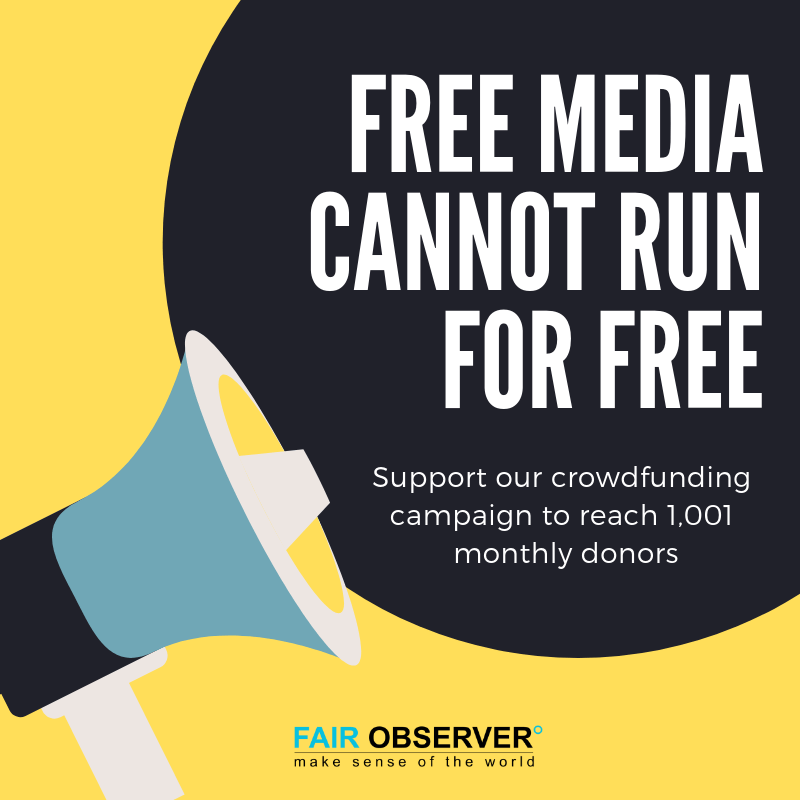Can “opportunity zones” lift struggling towns? Singer John Legend joined experts to discuss this tax incentive at a University of Pennsylvania Law School conference.
The $1.5 trillion Tax Cuts and Jobs Act, signed into law in December 2017, was the subject of heated debate about who mainly benefited from the tax overhaul in America. But buried in the plan was a provision that The New York Times called “the first new substantial federal attempt to aid [struggling] communities in more than a decade.”
The Tax Act created so-called “opportunity zones” meant to stimulate investment in low-income communities. Each state would designate what areas these zones would include. Venture capitalists and real estate developers who place at least 90% of their investment into an opportunity zone can see lower or even no taxes on capital gains depending on how long they stay.
More than 8,700 areas across the nation have been designated as opportunity zones, according to Forbes, and estimates put the number of residents impacted at 35 million. But will this provision truly revive the deep malaise in some of these towns?
“It all sounds great, but of course the devil is in the details,” said John Hollway, associate dean of the University of Pennsylvania Law School, speaking at the recent conference, Opportunity Zones and Inclusive Community Development.
Could the incentive be a win-win for both investors and neighborhoods? Will the zones function as they are meant to on paper — helping struggling communities — or will they merely be a windfall for the wealthy? What will be the impact on longtime residents, small businesses and the quality of life?
Among those interested in the answers is John Legend, who was instrumental in organizing the conference and also served as moderator. Although most people know him as an award-winning singer-songwriter, he is also an activist for community development, education and criminal justice. Legend said that while he is “blessed and fortunate” to be able to make music for a living, being in his position also enables him to convene discussions on important topics and to help “impact people’s lives who are often overlooked and not heard.”
Legend grew up in a working-class neighborhood in Springfield, Ohio. “A lot of my city is an opportunity zone as defined by the guidelines of the new legislation,” he said. “I’m very familiar with what it’s like to live in one of these areas.”
Joining Legend at the Opportunity Zones conference were public policy experts, community development representatives and academics alongside real estate developers and investors.
Promise and Peril of Opportunity Zones
“In today’s economy, you’ve got a record number of people in places getting left behind,” said John Lettieri, president and CEO of the Economic Innovation Group, a bipartisan public policy organization. He said that often top-line national statistics don’t reflect local realities.
Lettieri termed America’s economic growth “geographically fragmented … on a scale we’ve never seen before.” He asserted that post-Great Recession, the most prosperous 20% of ZIP codes are generating more net new jobs, businesses, population growth and advanced degree holders than the remaining 80% of ZIP codes combined, “by a long shot.”
What those other 80% of ZIP codes lack, said Lettieri, is access to long-term equity capital. At the same time, many American businesspeople have done very well post-recession. There has been much wealth accumulation, which could be used for “very powerful purposes,” he said.
Louis Dubin, a partner at the DC-based real estate developer Redbrick LMD, commented, “I’ve never seen — my career — so much capital looking for a home.” Lettieri added that many investors are seeking guidance for where to place their assets because “they don’t know how, they don’t know where, and they don’t want to do it alone.” The opportunity zones incentive could lead them to “scale in places that desperately need it.”
As for any potential risks for developers when investing in low-income communities, could legislation like opportunity zones be enough of a game-changer to make it worthwhile? Dubin noted that the cost of capital has plunged from double-digits to “probably in the single digits.” This means that real estate projects that were “marginally doable” have become doable.
However, additional regulations and legal guidance around opportunity zones are still being issued by the Internal Revenue Service (IRS). Dubin said he was looking to the first quarter of 2019, when “we’ll start to get a lot more clarity on how this is all going to work, and some of the early best practices around the issue.” He added, “It’s a very exciting time in our business, but we’re being cautious.”
Margaret Anadu, managing director of the urban investment group at Goldman Sachs, said the firm invests $1 billion annually of equity capital in underserved communities and has been doing so for nearly 20 years. She emphasized the effort and care needed to invest productively. “One of the things we’ve learned — and that’s with Philly, Camden, Baltimore, or wherever we are — is that it’s really hard, and it takes a lot of time, intention and real engagement with stakeholders.”
 Goldman provides the capital and relies on information from partnerships with community development organizations, not-for-profits and sponsors “on the ground.” “We don’t spend a dollar until we have spent time with [those organizations,] understanding what the needs are,” Anadu said.
Goldman provides the capital and relies on information from partnerships with community development organizations, not-for-profits and sponsors “on the ground.” “We don’t spend a dollar until we have spent time with [those organizations,] understanding what the needs are,” Anadu said.
And the answer isn’t always straightforward. Sometimes community leaders will disagree about what constitutes progress, she said. Indeed, community engagement must be a front-end process. “Don’t just swoop in and ‘save’ them” with a fully-fledged plan, said one attendee.
One community development organization with which Goldman works is Enterprise Community Partners, a Maryland-based national nonprofit that provides affordable housing across the US. Anadu said she appreciated working with knowledgeable entities like Enterprise because the deals in question are typically “incredibly complicated.”
“[Opportunity zones] are one incentive that will push us forward, and will move some of those marginal deals into the ‘go’ column. But it still needs this tax incentive, that tax credit, this local abatement, etc.,” Anadu said. Her group looks for partners who in addition to understanding the “human side and the need side,” know how to get a deal done.
Enterprise’s former CEO, Terri Ludwig, agreed. It’s important to “lift up the local community voice and understand what are the needs, what are the processes, and how can we actually bring something to bear — whether that’s affordable housing, a charter school, a health care clinic, or something around job creation.” It really takes a blend of activities to make a difference, Anadu added.
Former Philadelphia Mayor Michael Nutter, now a Columbia University professor of urban and public affairs, agreed that opportunity zones should be viewed as “one tool of many.” Realistically, any deal that gets done is usually “a half of this, a half of other sources,” he said.
The idea that opportunity zones should be combined with other initiatives to be truly effective — with programs to improve education, employment, medical care, nutrition and criminal justice — was a recurrent theme at the conference. Some said designating such zones is merely a tax incentive, not a program to help distressed communities.
Local governments and community advocates need to be thoughtful and vigilant about how it’s implemented. “The legislation is so broadly written that savvy investors, corporations and real estate developers could exploit it,” according to a Bloomberg article.
Protecting Existing Residents and Businesses
Nutter called for “intentionality” by public officials. “The government should not put itself in a position where it’s a passive actor and just kind of let the wild, wild West happen … and you’re just excited that somebody wants to invest. You have to make some tough decisions,” he said. A mayor should be asking, for example, “Where’s our best impact? What’s it going to do about poverty, about public safety? What’s going on with the schools in that particular neighborhood?”
Nutter also talked about the challenges of revitalizing neighborhoods while not driving property taxes so high that existing residents face eviction. “Not only [should we be] talking about incentives to invest, but also incentives for the ability to stay, and that you don’t end up like my grandmother who used to talk about [being] … house-rich and cash-poor.”
Nutter said when he was Philadelphia’s mayor, he implemented the city’s first-ever homestead exemption — the Longtime Owner Occupants Program — which provided a tax abatement for homeowners whose property assessment tripled or more from year to year, so their taxes would stay affordable.
Other initiatives were discussed: empowerment zones, enterprise zones, renewal communities, down payment assistance, lease-to-own programs for small businesses. It was clear that there was no single formula for success. The point was also made that better metrics are needed: not just dollars funneled into a community, but whether the situation of longtime residents and businesses had changed for the better.
Several panelists commented that historical, systemic racism is partly to blame for the intractable problems of many distressed communities. It was important to acknowledge that, they said. “You cannot overstate how our whole housing financing policy was built around intentional structural racism,” said Ludwig. “How can we be just as intentional about ‘un-designing’ that?”
Anadu agreed. “These communities didn’t become underserved overnight. There were reasons: intentional, legal, historical, racism,” she said. “So, we also don’t think the challenges in these neighborhoods will get solved overnight.”
Legend also noted that “a lot of times folks don’t want to live in the same neighborhood as those people. … You can’t be a not-in-my-backyard progressive where you want racial equality, but you don’t want those kids in school with your kids.” He added, “We all have a responsibility as individuals to not be part of the problem.”
*[This article was originally published by Knowledge@Wharton, a partner institution of Fair Observer.]
The views expressed in this article are the author’s own and do not necessarily reflect Fair Observer’s editorial policy.
Support Fair Observer
We rely on your support for our independence, diversity and quality.
For more than 10 years, Fair Observer has been free, fair and independent. No billionaire owns us, no advertisers control us. We are a reader-supported nonprofit. Unlike many other publications, we keep our content free for readers regardless of where they live or whether they can afford to pay. We have no paywalls and no ads.
In the post-truth era of fake news, echo chambers and filter bubbles, we publish a plurality of perspectives from around the world. Anyone can publish with us, but everyone goes through a rigorous editorial process. So, you get fact-checked, well-reasoned content instead of noise.
We publish 2,500+ voices from 90+ countries. We also conduct education and training programs
on subjects ranging from digital media and journalism to writing and critical thinking. This
doesn’t come cheap. Servers, editors, trainers and web developers cost
money.
Please consider supporting us on a regular basis as a recurring donor or a
sustaining member.
Will you support FO’s journalism?
We rely on your support for our independence, diversity and quality.






